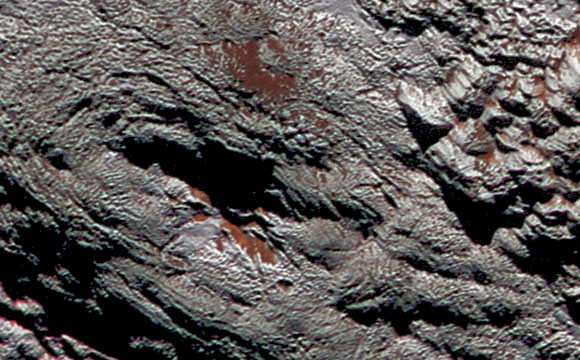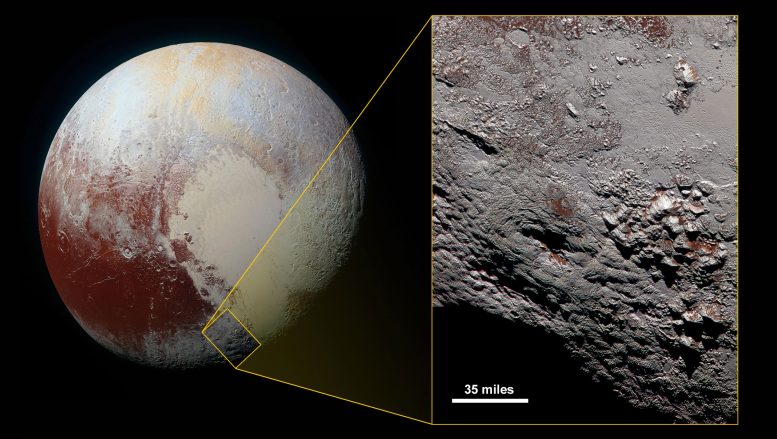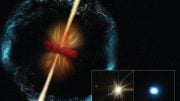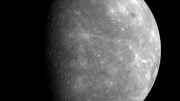
Wright Mons in Color. This composite image of a possible ice volcano on Pluto includes pictures taken by the New Horizons spacecraft’s Long Range Reconnaissance Imager (LORRI) on July 14, 2015, from a range of about 30,000 miles (48,000 kilometers), showing features as small as 1,500 feet (450 meters) across. Sprinkled across the LORRI mosaic is enhanced color data from the Ralph/Multispectral Visible Imaging Camera (MVIC), from a range of 21,000 miles (34,000 kilometers) and at a resolution of about 2,100 feet (650 meters) per pixel. The entire scene is 140 miles (230 kilometers) across. Credit: NASA/JHUAPL/SwRI
A new image from the New Horizons Spacecraft reveals more of Pluto’s surface features.
Scientists with NASA’s New Horizons mission have assembled this highest-resolution color view of one of two potential cryovolcanoes spotted on the surface of Pluto by the New Horizons spacecraft in July 2015.
This feature, known as Wright Mons, was informally named by the New Horizons team in honor of the Wright brothers. At about 90 miles (150 kilometers) across and 2.5 miles (4 kilometers) high, this feature is enormous. If it is in fact a volcano, as suspected, it would be the largest such feature discovered in the outer solar system.
Mission scientists are intrigued by the sparse distribution of red material in the image and wonder why it is not more widespread. Also perplexing is that there is only one identified impact crater on Wright Mons itself, telling scientists that the surface (as well as some of the crust underneath) was created relatively recently. This in turn may indicate that Wright Mons was volcanically active late in Pluto’s history.










Ice volcanoes on Pluto which is a very distant very cold planet is indication of sublimation of gases from ice to gas which bubbles out the surface. Ordinary volcanoes spreads the lava evenly in a circular smooth pattern. This phenomena should be universal on all the very distant planets which are cold and also on the comets where the sublimation of ice will make the rocks very much pot-holed since they are not supposed to get targeted by asteroids on them. Thank You.